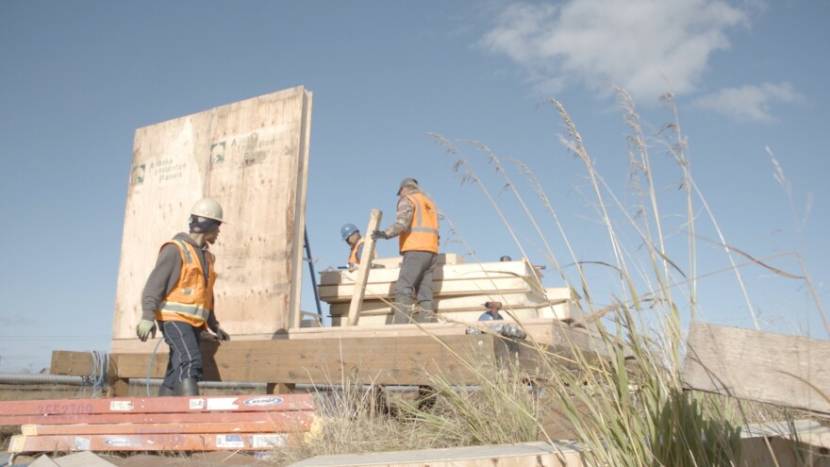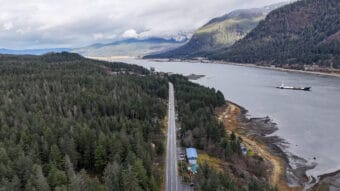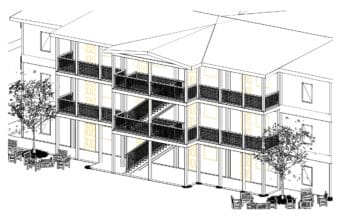
A surge of new housing is coming to the Yukon-Kuskokwim Delta. Most of those new units are slated to be of the trendy, tiny home variety. But with households in the Yukon-Kuskokwim Delta generally much larger than the national average, some tribes are questioning whether tiny homes are a good fit for their communities.
The U.S. Department of Housing and Urban Development recently announced almost $7 million in funding for Aniak, Atmautluak, Napaimute, Newtok, Quinhagak, Toksook Bay, and Tununak to begin construction on 25 new homes this year. The funding stems from federal coronavirus relief funding, which has brought a huge influx of money into Alaska for tribes to build homes.
“An explosion is a good term for how much that has increased,” said Greg Stuckey, administrator for the Alaska Office of Native American Programs of HUD.
Because these grants are tied to coronavirus relief funding, tribes must use the homes as isolation or quarantine units, at least at first.
“And then, you know, later, when COVID is eventually over, that you can use those to lower overcrowding in your communities, because that is a major issue in rural Alaska,” Stuckey said.
About 40% of homes in the Y-K Delta are either overcrowded or severely overcrowded. According to a statewide housing assessment, over 2,400 homes need to be built to fix that.
Nearly all of the homes that will be built in the Y-K Delta using these HUD grants will be tiny homes. They will be smaller than 500 square feet, with the kitchen, bed, and living space all in the same room. There will be a separate bathroom, but no separate bedrooms.
Tiny homes have been all the rage in recent years, often billed as an answer to affordable housing. But are they a good fit for a region where households are, on average, 50-80% larger than the national average?
The Yukon-Kuskokwim Delta has experimented with tiny homes before. The non-profit organization, Coastal Villages Region Fund, built one in Eek in 2018. The organization says that it would not do it again.
“We found that people need more space than a tiny home with the number of people in the family,” said Oscar Evon, Regional Affairs Director at CVRF.
Evon said that there were other issues with tiny homes, such as how banks wouldn’t finance mortgages for them. CVRF had originally planned for homeowners to purchase tiny homes through mortgages, which would have opened another pathway to homeownership in Y-K Delta villages. Most are currently built and paid for by the regional housing authority or through grants. After pivoting away from tiny homes, CVRF now builds more traditional three- to four-bedroom homes, which Evon says banks finance mortgages for and fit families’ needs better.
“A bigger home gives a family more space to raise their families and sometimes even their extended families,” Evon said.
Some of the tribes that recently received a HUD grant to build tiny homes have come to the same conclusion. Toksook Bay was awarded $1,035,000 to build five tiny homes, but Tribal Administrator Robert Pitka Sr. said that Toksook Bay would rather build bigger homes.
“We would choose two-bedroom home instead of tiny home,” Pitka Sr. said.
However, Toksook Bay submitted a grant application and received funds to build tiny homes. Pitka Sr. said that he thought the grant was specifically for tiny homes.
“The ICDBG [Indian Community Development Block] grant already had wording in there where it’s for tiny homes,” Pitka Sr. said.
HUD’s ICDBG grant requirements suggest building tiny homes as one way to use grant funds, which may have been enough to convince tribes to include tiny homes in their grant application. Tununak, which also received a grant to build tiny homes, also said it would prefer to build homes with bedrooms.
Stuckey said that HUD does not require applicants to build tiny homes or any particular type of housing and did not favor applications that included tiny homes. For example, Newtok received the same grant award to build three three-bedroom homes.
“It’s self determination. The tribes decide, the tribes are going to tell me what they’re going to build,” Stuckey said.
If tribes like Toksook Bay decide that they would rather build larger homes, they will be able to do so. HUD spokesperson Vanessa Krueger said that tribes can submit an amendment to their grant application.
In Toksook Bay, Pitka Sr. said that the new homes, whether they’re tiny or not, will make a big difference to the families currently living in old, unsuitable homes.
“They’re moldy. They’re cold. They’re rotten. They don’t have water and sewer system. Some are even tinier than tiny homes. And at least a brand new tiny house would make it 100% better,” Pitka Sr. said.
Pitka Sr. said that those families could move into their new homes later this year.


